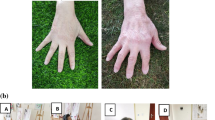Abstract
Plants can improve indoor air quality, and affect the work efficiency and subjective perceptions. However, the conclusions of existing experiments regarding how plants affect work efficiency are not uniform. To further explore this subject, this study designed five different working conditions, and selected a variety of “general tasks” and “tasks requiring concentration” as operational tasks. The effects of the plant arrangement and quantity on work efficiency were studied by analyzing the performance of subjects in different working conditions. The effects of the plants on the subjective perceptions were investigated using questionnaires. The experimental results show that the effects of plants on work efficiency were related to the nature of the work, the placement of the plants, and the number of plants. Plants had no effect on the efficiency of general tasks such as “symmetry breadth,” but had a positive impact on the efficiency of general tasks such as “operational breadth.” Moreover, by changing the arrangement and quantity of plants, the efficiency of general tasks could be increased by up to 19.1%. In contrast, plants placed within a coincident view had a negative impact on the efficiency of “tasks requiring concentration,” and the work efficiency could be reduced by up to 12.4%. In addition, plants could increase enthusiasm and willingness to work by 12.5% and 11.8%, respectively.




Similar content being viewed by others
References
Bonett DG (2008) Confidence intervals for standardized linear contrasts of means. Psychol Methods 13:99–109
Bringslimark T, Hartig T, Patil GG (2009) The psychological benefits of indoor plants: a critical review of the experimental literature. Environ Psycho l29:422–433
British Medical Journal Publishing Group (1996) Declaration of Helsinki. Bmj Brit Med J 313:1448–1449
Chang C-Y, Chen P-K (2005) Human response to window views and indoor plants in the workplace. Hortscience 40:1354–1359
Chen J-G, Yu X-X, Bi H-X et al (2017) Indoor simulations reveal differences among plant species in capturing particulate matter. PLoS One 12:e0177539
Cohen J (1962) The statistical power of abnormal-social psychological research: a review. J Abnorm Soc Psychol 65
Deng L-J, Deng Q-H (2018) The basic roles of indoor plants in human health and comfort. Environ Sci Pollut Res 25:36087–36101
Dravigne A, Waliczek TM, Lineberger RD et al (2008) The effect of live plants and window views of green spaces on employee perceptions of job satisfaction. Hortscience 43:183–187
Fjeld T (2000) The effect of interior planting on health and discomfort among workers and school children. Hort Technology 10:46–52
Ghazalli AJ, Brack C, Bai X-M et al (2018) Alterations in use of space, air quality, temperature and humidity by the presence of vertical greenery system in a building corridor. Urban For Urban Green 32:177–184
Guéguen N (2012) Dead indoor plants strengthen belief in global warming. J Environ Psychol 32:173–177
Husti A, Cantor M, Stefan R et al (2016) Assessing the indoor pollutants effect on ornamental plants leaves by FT-IR spectroscopy. Acta Phys Pol A 129:142–149
Kaplan R (1995) The restorative benefits of nature: toward an integrative frame-work. J Environ Psychol 15:241–248
Kim J, Cha SH, Koo C, Tang SK (2018) The effects of indoor plants and artificial windows in an underground environment. Build Environ 138:53–62
Larissa L, Jeffrey A, Brian D (1998) Plants in the workplace: the effects of plant density on productivity, attitudes, and perceptions. Environ Behav 30:261–281
Li D-M, Liu C, Li G-Y (2001) The compilation and standardization of “basic cognitive ability test”. Aust J Psychol 5:453–460
Lin M-W, Chen L-Y, Chuah YK (2017) Investigation of a potted plant (hedera helix) with photo-regulation to remove volatile formaldehyde for improving indoor air quality. Aerosol Air Qual Res 17:2543–2554
Lohr VI, Pearson-Mims CH, Goodwin GK (1996) Interior plants may improve worker productivity and reduce stress in a windowless environment. J Environ Hortic 14
Mcnair DM, Lorr M et al (1964) An analysis of mood in neurotics. J Abnorm Soc Psychol 69:620–627
Raanaas RK, Evensen KH, Rich D, Sjostrom G, Patil C (2011) Benefits of indoor plants on attention capacity in an office setting. J Environ Psychol 31:99–105
Shibata S, Suzuki N (2002) Effects of the foliage plant on task performance and mood. J Environ Psychol 22:265–272
Shibata S, Suzuki N (2004) Effects of an indoor plant on creative task performance and mood. Scand J Psychol 45:373–381
Stone NJ, Irvine JM (1993) Performance, mood, satisfaction, and task type in various work environments: a preliminary study. J Gen Psychol 120:489–497
Teiri H, Pourzamani H, Hajizadeh Y (2018) Phytoremediation of VOCs from indoor air by ornamental potted plants: a pilot study using a palm species, under the controlled environment. Chemosphere 197:375–381
Tong Z-N (2018) Discussion on interior greening decoration of residence. Earth Environ Sci 113
Funding
This work was financially supported by the Fundamental Research Funds for the Central Universities [2682018CX55].
Author information
Authors and Affiliations
Corresponding author
Additional information
Responsible editor: Philippe Garrigues
Publisher’s note
Springer Nature remains neutral with regard to jurisdictional claims in published maps and institutional affiliations.
Rights and permissions
About this article
Cite this article
Zuo, L., Wu, D., Yuan, Y. et al. Effect of arrangement and quantity of epipremnum aureum on work efficiency and subjective perceptions. Environ Sci Pollut Res 27, 17804–17814 (2020). https://doi.org/10.1007/s11356-020-08078-8
Received:
Accepted:
Published:
Issue Date:
DOI: https://doi.org/10.1007/s11356-020-08078-8




